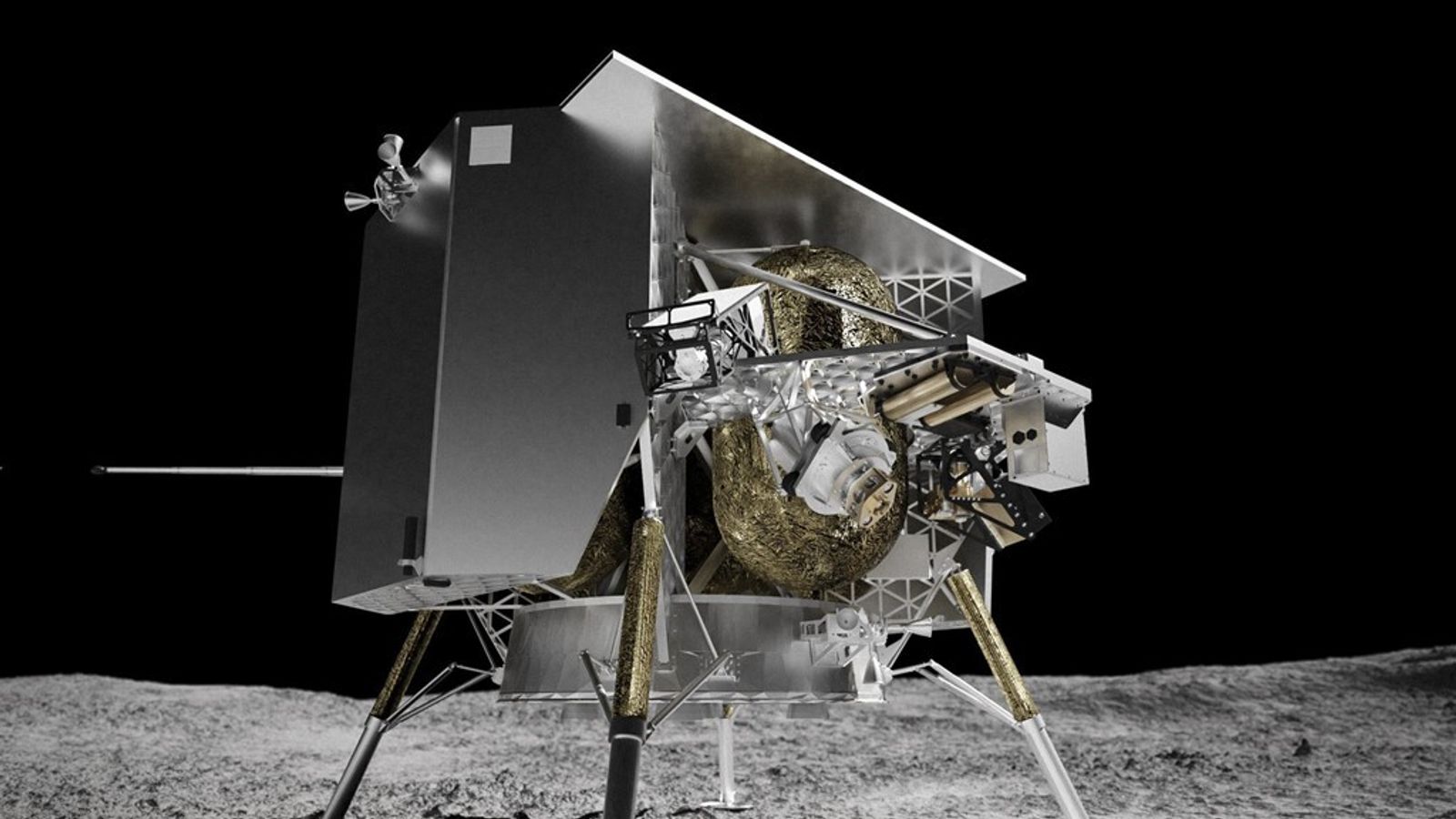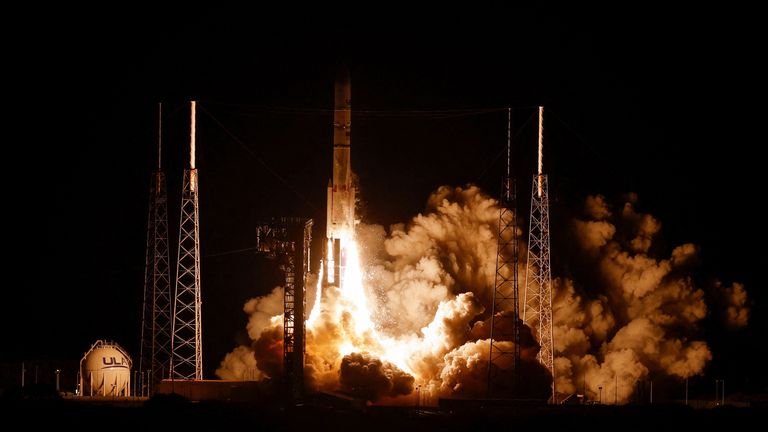NASA is on its way back to the moon, but this time it’s not at the controls.
Instead, it’s bought a ticket to ride on a private spacecraft, the start of a new era of commercial lunar missions.
It’s a seismic shift.
NASA hopes the innovation of tech start-ups will bring down the costs of transporting equipment to the moon.
It paid Astrobotic $108m (£85m) to put five experiments on the lunar surface. That’s a bargain.
It’s also a gamble. Astrobotic’s shed-sized lunar lander, called Peregrine, is untested, as was the rocket that launched it towards the heavens.
So far it has paid off. The launch was textbook.
But there is a long way to go. The moon’s surface is littered with spacecraft that didn’t make it.
NASA has given Astrobotic a new landing system to test out in the hope of increasing the odds.
Great leaps are being taken to try and make lunar landings routine. Remember, a human return to the moon could be just a year or two away.
But while NASA celebrates the value for money from involving commercial know-how, there is a cost.
To make the sums add up, Astrobotic has sold space to other companies with aims that are far from scientific.
One company is sending a can of its sports drink in a powdered form so future astronauts can mix it with lunar water.
And even more controversially there are capsules containing cremated human remains and DNA. That’s angered the Navajo Nation of indigenous Americans, who regard the moon as sacred.
Even those with no spiritual connection to the moon might feel a little uneasy over commercial missions.
For decades it has been a giant science lab – a time capsule that could tell us something about the solar system’s history – and in future it could be a location for new radio telescopes that could peer into space without interference from Earth.
But regular commercial missions will kick up plumes of dust and the exhaust from rocket engines will add molecules to the moon’s incredibly thin atmosphere. Is that compatible with the science?
Read more:
NASA offering chance to send your name to the moon
Images reveal Neptune and Uranus are not the colours we thought
The Outer Space Treaty and more recent Artemis Accords mean no nation can claim territory on the moon, or use it for anything but peaceful purposes.
But there’s no meaningful control on mining, or on what space missions can leave behind on the surface.
In many ways, Antarctica is better regulated. Under the Antarctic Treaty even human waste has to be removed, part of a leave-no-trace ethos that preserves a pristine environment.
In the commercial dash back to the moon the lessons from Earth are in danger of being forgotten.
This story originally appeared on Skynews


